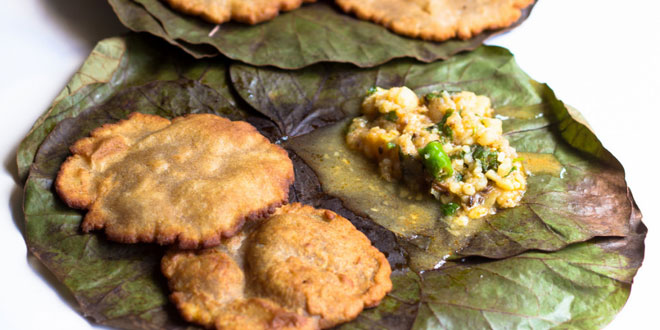The Navratri fasting is observed from the first day to the ninth day. Some people confine to milk and fruits during the nine days. Most devotees take a single meal during the day. Non-vegetarian food is totally avoided.
Dishes For Navratri:
- Sabudana vada ideal food during Navratri fast
- Sundal
- Fafda – Jalebi
- Sabudana vada
- Sabudana Khichadi
- Sawank Ke Chawal
- Dahi Pudine Wale Aloo
- Makhane Ki Sabzi
- Shakarkandi Ki Chaat
- Sabudana Papad
- Banana Raita
- Aloo Raita
- Singhare Ke Pakode
- Banana Chips
- Kaddu Ka Raita
- Malaiwale Kofte
- Fruits / Fruit Juices
- Sabudana Khir
- Bhagar
Navratri Fast Rules and Food: What to eat and what not to eat
Fasting in India will start from Thursday, October 07, 2021, for the month of Chaitra. Navratri is one of the significant festivals of Hindu religion that celebrates the victory of good over evil. The festival of Navratri is dedicated to Goddess Durga and her nine avatars. There are four Navratris in a year but only two are widely celebrated – Chaitra Navratri (March-April) and Sharad Navratri (October-November).
Hindu devotees keep fasting for nine days to please and seek blessings of Goddess Durga. There can be variation in the number of fasting days. While many observe the fasts for all nine days, there are some devotees who keep fast in jodas (couple) – the first two or the last two days of the Navratri.
Fasting has many variations too. Some people take only water during these nine days, while some eat fruits and some people eat one meal a day. Kuttu Ki Puri, Singhade Ka Halwa, Singhare Ke Pakore, Sabudana Vada and Sabudana Khichdi are some of the popular Navratri food recipes.
Here are all the fasting rules you should know and also what you can eat or what you need to avoid:
- Flours and Grains
Regular grains like wheat and rice are not allowed during Navratri fasting. You should eat Kuttu ka Atta (buckwheat flour) or Singhare ka Atta (water chestnut flour) or Rajgira ka Atta (amaranth flour) during Navratri fastings. Samai Ke Chawal or Samvat Ke Chwaal (barnyard millet) to replace rice in making khichdi, dhoklas or kheer. Sabudana is another staple food during Navratri that can be used in making kheer, vadas and papads. - Fruits
You can eat all types of fruits during fasting. Some devotees fast only fruits and milk for all these nine days. - Spices and Herbs
Normal table salt are not consumed during Navratris. Use an alternative rock salt or sendha namak for cooking during Navratri. In spices, you can use cumin or cumin powder, black pepper powder, green cardamom, cloves, cinnamon, ajwain, black peppercorns, dry pomegranate seeds, kokum, tamarind and nutmeg. Some people also use fresh coriander leaves, red chilly powder, dry mango powder, chaat masala etc. - Vegetables
During Navratri fasting, most of the people consume vegetables like – potatoes, sweet potato, arbi, kachalu, suran or yam, lemons, raw or semi-ripe pumpkin, raw pumpkin, spinach, tomatoes, bottle gourd, cucumber, carrots etc. - Milk and dairy products
Milk and dairy products like curd, paneer or cottage cheese, white butter, ghee, malai, and preparations with milk and khoya are mostly consumed during Navratri fasting. - Avoid these food items
All fast-foods, canned food, and foods prepared using onion or garlic should be avoided. Devotees who are keeping fasts should also avoid consuming legumes, lentils, rice flour, cornflour, all purpose flour, whole wheat flour and semolina (rava). Non-vegetarian food, eggs, alcohol, smoking and aerated drinks are also a strict no-no.
 Kids Portal For Parents India Kids Network
Kids Portal For Parents India Kids Network







